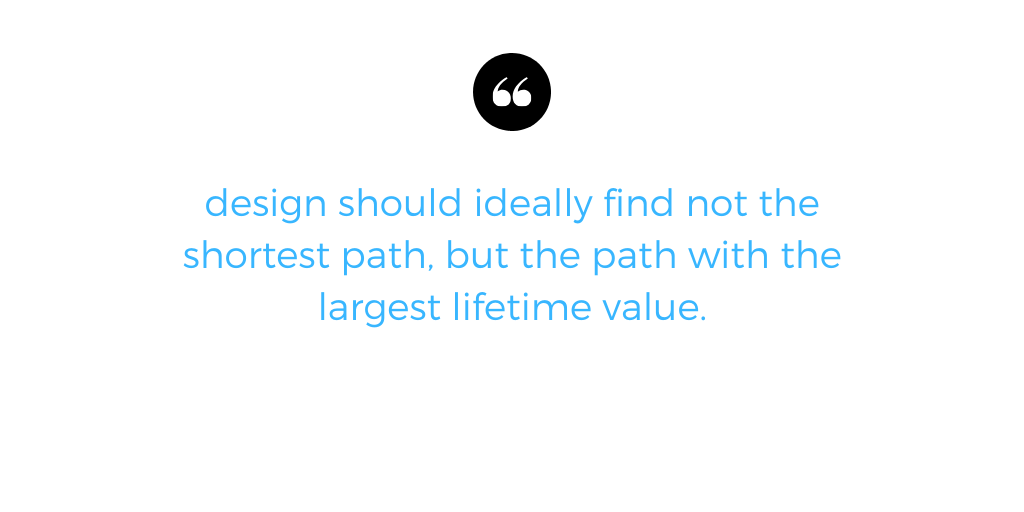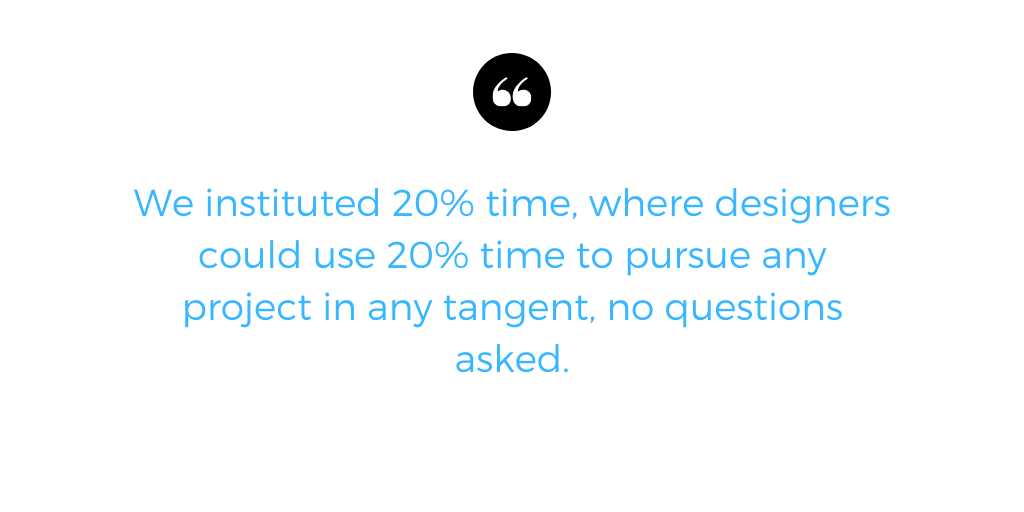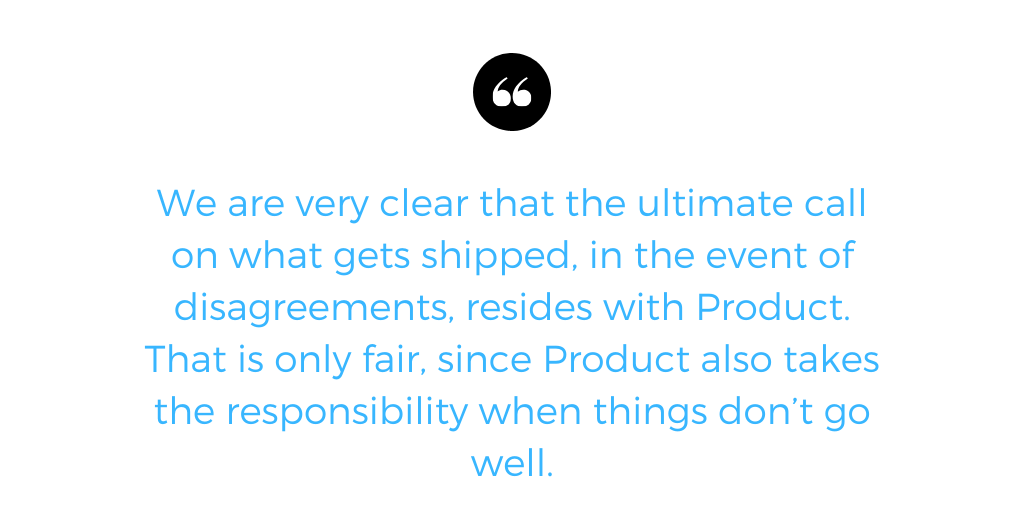As a co-founder of VC-backed travel start-up Mygola (acquired by MakeMyTrip), and then Chief Product Officer for MakeMyTrip and GoIbibo (MMT / GI) – India’s largest OTA, Anshuman Bapna knows a thing or two about building digital products for a demanding consumer. Little wonder, then, that when we needed inputs on creating product organizations, we turned to Anshuman. In a free-wheeling conversation centred around product management, he chose to focus squarely on design – signifying the overall importance of the design function – and spoke at length about putting design at the heart of an organization’s product development process.
Read on to know more about
- Product thinking v/s design thinking
- Structuring design centred product teams
- Managing design centred product teams
- What does great design mean for consumers
Product Thinking v/s Design Thinking
In Anshuman’s view, traditional ‘product’ thinking often runs the risk of missing the forest for the trees. “An admittedly crude way to think about product thinking and design thinking is that traditional product thinking leads to local optimization, whereas design thinking is geared towards driving globally optimized outcomes.”

Rethinking MMT’s final purchase page was a case in point. “A purely analytical approach to driving increased conversions on the page would have focused on regular interventions e.g. changing dimensions (such as placement, fonts) of key elements (such as buttons) and running A/B tests. However, a design thinking approach led us to phrase the problem differently – since the user invested significant time and effort to get to the purchase page, it is very likely that he / she is a serious buyer; assuming we are price competitive for the most part, is there something else that is at play other than the layout of one particular page? With this approach – which focused on everything but the payment page – we realized that the real problem was a lack of trust at the user’s end. Constantly seeing different prices – as a result of fees, taxes etc. – at each step of the purchase journey introduced doubt in the user’s mind. By dropping off, the user was telling us: Be transparent, and show me the final, final price at the first go! We subsequently incorporated many of those learnings into our product, and saw great results.”
Structuring Design Centred Product Teams
Ultimately, walking the talk is what matters in this journey. Without concrete structural changes, most attempts at truly incorporating design in the product process end up being little more than lip service. Towards this end, Anshuman gave examples of tangible steps that were taken at MMT / GI.
“One, we changed the physical layout of our office. In the way we functioned earlier, product managers (PMs) would sit in an ivory tower, and they already knew – through analysis of data, user research, or something else – what the product needed to be. PMs already had wireframes of how the product needed to look like, and designers were used at the last stage of the process to make things ‘look pretty’ before sending them to engineering. As a result, when things shipped, nobody cared except for the PMs, since nobody had had an input to the process. Our office layout – product managers and the engineering team would sit close to each other on a single floor, while the design team had a separate studio, in the equivalent of ‘in the middle of nowhere’ – also reflected this style of working. More important, everyone – including design – was happy with this arrangement. From this siloed arrangement, we literally opened up the floor space and created a design studio right at the centre, with everyone else arrayed around design. Not only did physical proximity force people to interact more with each other, but the symbolism also sent out a message that design is at the heart of what we do.”
“Two, we expanded the size of the design team, ultimately landing up with an ~1:1 ratio of designers to PMs, with PMs and designers mapped to each other. This was important, since an understaffed team would never have the bandwidth for original thinking, and would continue to do last-minute work for business critical deliverables where PMs had already figured out the solution.”
“Three, we made sure Design had an equal say at the table. Structurally, Design, Product and Technology all report directly to the CEO. These three functions are peers, and none is subordinate to the other.” Anshuman clarified that a peer relationship did not mean stifled decision-making.
Managing Design Centred Product Teams
Now that Design, the function, has been suitably equipped and integrated, how does one ensure that it consistently delivers the goods. The first step, in Anshuman’s mind, is to get the right leader for this function. “India has limited design talent with more than 5 years of experience, and very few of them have experienced an environment where the function had a strategic role to play for the company. That’s why we brought in Jay Dutta, who used to run design for Flipkart and for Adobe. It took us a year, but getting him on board has been totally worth it. He used his experience to set up a design organization that people aspired to be a part of, since they knew they would truly learn their craft well, and also acts as a mentor and role model for younger designers.”
In addition to the right leadership, MMT / GI instituted changes to how the design team was managed on a day-to-day basis. “In fast-paced businesses, it is becoming clear that there is a need for full-stack designers, just like full-stack developers. However, this leads to a divergence in the needs of business teams and designers. Business teams want designers who ‘get’ the business context, and then stick with them. On the other hand, while designers value the opportunity to contribute tangibly to business goals, they ultimately need to work on a range of problems to avoid stagnation. We adopted a fixed and rotation model for the design team, with some design members embedded with business units for longer durations so that they could have context, and specialists – e.g. on visual design – who would rotate across BUs in shorter intervals. In addition to ensuring business continuity, this was a much more effective way to improve design across the board as opposed to imposing a common design language. Designers who would rotate would carry best practices across BUs, as opposed to spending multiple sprints in trying to create and enforce style guides.”
This is admittedly a very fluid arrangement, which flies in the face of traditional management thinking. “Consequently, the role of design managers – who usually manage 8 or 9 designers – is very critical. The design manager’s job is abstracted by one level, with PMs and designers working directly keeping design managers in the loop. However, their primary role is to act as a custodian of the design ethos, and to ensure that short-term business needs and long-term design needs are in balance e.g. the design manager could say that we will ship a feature in a less than perfect fashion now, but with a commitment from the PM to clean up the associated design debt after a couple of sprints. A lot of senior design talent in India lies in services companies, and it’s important to ensure that design managers do not carry a traditional services mindset, where they see their role as insulating the design team from the unreasonable demands of clients – in this case the product team. As such, approving every piece of work that PMs and designers work on is not primary for a design manager.”
As with any other function, providing an appropriate degree of freedom is key to see great results. “Designers have a standard problem of running from deadline to deadline, and of not being able to work on truly needle-moving stuff.

Several learnings emerged as a result of 20% projects, and Anshuman highlighted one in particular. “The hotels search results page is critical for us, since this leads to an aha moment for consumers. Consumers compare buying travel offline and online, and the reality is that offline has a very strong value proposition – there is a guy you know who you can catch if things go wrong, you deal directly with the owner of the inventory, and often an agent who knows you well will accept payment after the trip is done. It is at the hotel booking page that people suddenly see the value of booking online, because they see hundreds of hotels that they can choose from, with pictures and reviews and what not.”
A design thinking approach led to MMT completely rethinking this page in a counter-intuitive fashion. “Traditionally, we treated the hotels booking process just like the flight booking process – we would ask users for two variables (travel dates and location), and then show them a range of options to choose from. The generally accepted paradigm is to keep this page as light as possible, and give users additional choice through mechanisms like filters. However, selecting a hotel involves many more variables – star rating, presence of specific amenities, location – than just date and location; and one designer questioned the underlying assumption of collapsing a multi-variable problem into a two-variable problem. He asked that would it be more useful to get additional data points from users before showing them any results at all. While counter-intuitive, we realized that this hypothesis was correct. As a result, we revamped our hotels display page. One, we moved from a search to a wizard while getting a user’s preferences, constantly asking users for more information. We make sure that the user can see the list of hotels updating in the background, so that there is assurance that we will fetch inventory at the end of this effort. Two, we changed how we display hotel information, to highlight information which is most critical for the user e.g. we first show images of clean bathrooms in the case of budget hotels. As a result of the revamp, we saw significantly better conversion right away.”
Tying it All Together: What Does Great Design Mean for Consumers
“Ultimately, the best products engage users at an emotional level, where consumers trust the product to an extent that they feel happy about using it. A good recent example of this is Cred’s onboarding process. From Day 1, it was designed to engender trust, though trust is not the hook for Cred’s users. From a traditional product perspective, it would have made more sense to focus on communicating the amazing offers that came with a Cred membership. However, Cred goes to great lengths in the onboarding process to assure the users that their card details are safe – there is constant communication around this, and they transfer money to your account, as opposed to from it, during the verification process. Even though the amount involved – INR 1 – is insignificant, and nobody would mind paying it, this act of giving you money completely changes your relationship with the product.”
A design centric approach, driven by user empathy, is critical to establish such levels of trust with users. A degree of consumer obsession, which may strike others as unreasonable, may be needed in this process. “The founders of Airbnb – Joe and Brian – would personally experience potential new features with multiple hosts before releasing something, even when the company had achieved USD 10B in private market value. While there is no ready answer on how to institutionalize user centricity in your organization, it is clear that the founder’s role will be primary in this journey.”


